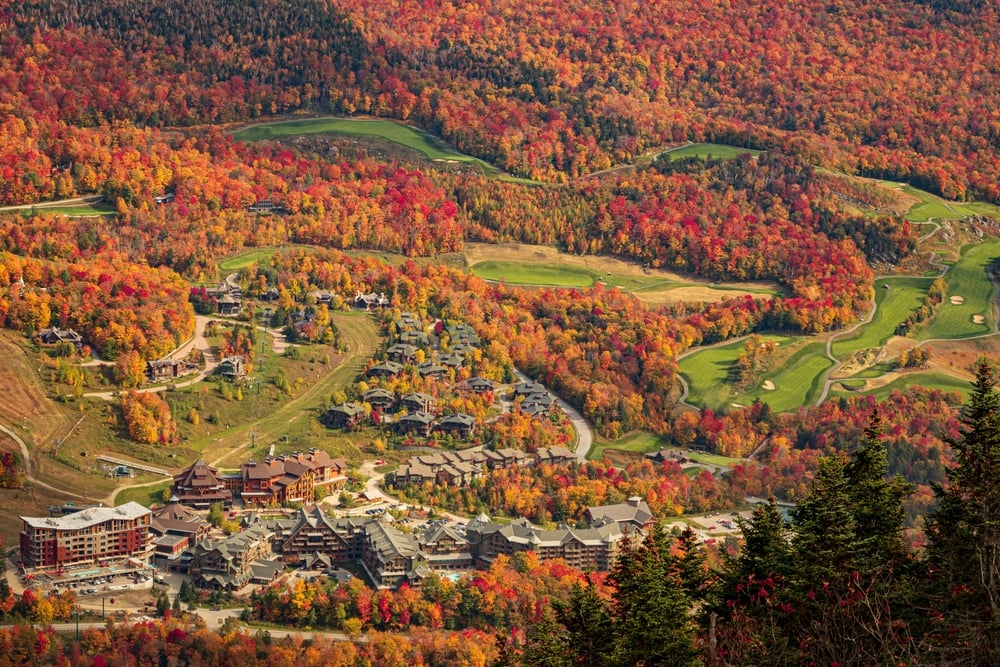The Vanderbilt and British royal residences stand as icons of ambition, wealth, and that elusive quality: legacy. On one side of the Atlantic, Vanderbilt homes like Marble House and Biltmore epitomize Gilded Age indulgence. Marble House, inspired by the French palaces, doesn’t whisper wealth — it shouts it through gilded walls and imported marbles. Biltmore, the American castle in Asheville, flaunts its owner George Vanderbilt’s love for European elegance and art. Each room is a stage for American aristocracy’s attempt to rival the sophistication and style of Europe, filling halls with opulence that America had rarely seen. Across the pond, Buckingham Palace and Windsor Castle hold an entirely different weight. The British royal residences are not mere displays of wealth; they are state symbols, woven deeply into the national identity. Buckingham Palace, with its grand neoclassical facade, isn’t simply a home; it is the throne room of British tradition. Windsor Castle, one of the oldest continuously occupied castles in the world, carries the scars of medieval fortresses and the elegance of Gothic cathedrals, evolving with each era. Where Vanderbilt homes capture the high of American entrepreneurial success, royal palaces embody an enduring continuity — each room bearing witness to dynasties that shaped the nation. These two legacies reveal how wealth and power shape architecture and, in turn, history itself. First up… Vanderbilt residences by modern value.
10. Vanderbilt Residences by Modern Value – Florham (Madison, NJ) – Modern Value: $40 million
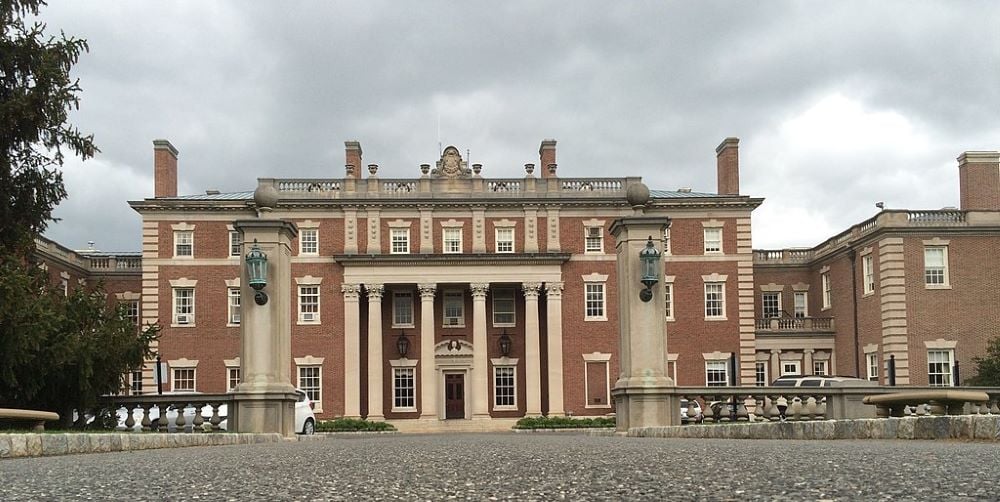
Florham, the Vanderbilt-Twombly estate in Madison, New Jersey, stands as a Gilded Age wonder that translates European grandeur into American soil. Built in 1894 for Florence Vanderbilt and her husband Hamilton Twombly, the mansion was crafted by the powerhouse duo: architect Stanford White and landscape architect Frederick Law Olmsted. With over 100 rooms sprawled across 1,200 acres, Florham embraced the Beaux-Arts style with a touch of French Renaissance influence, marked by its stately limestone facades and imposing porticos. Every detail was grand but restrained — marble floors, mahogany paneling, tapestries sourced from Europe. The mansion’s formal gardens mirror those found in English country estates, blending sculpted topiary, lush lawns, and meticulous pathways. Designed for hosting, Florham’s ballrooms and salons served as a stage for elite social gatherings where Vanderbilts, Twomblys, and America’s high society sipped champagne and swapped stories in rooms that seemed to echo with wealth. Now part of Fairleigh Dickinson University, Florham retains its architectural charm while playing an entirely new role. Florham endures as a testament to American ambition cloaked in European elegance.
9. Petit Chateau (New York, NY)- Modern Value: $50 million
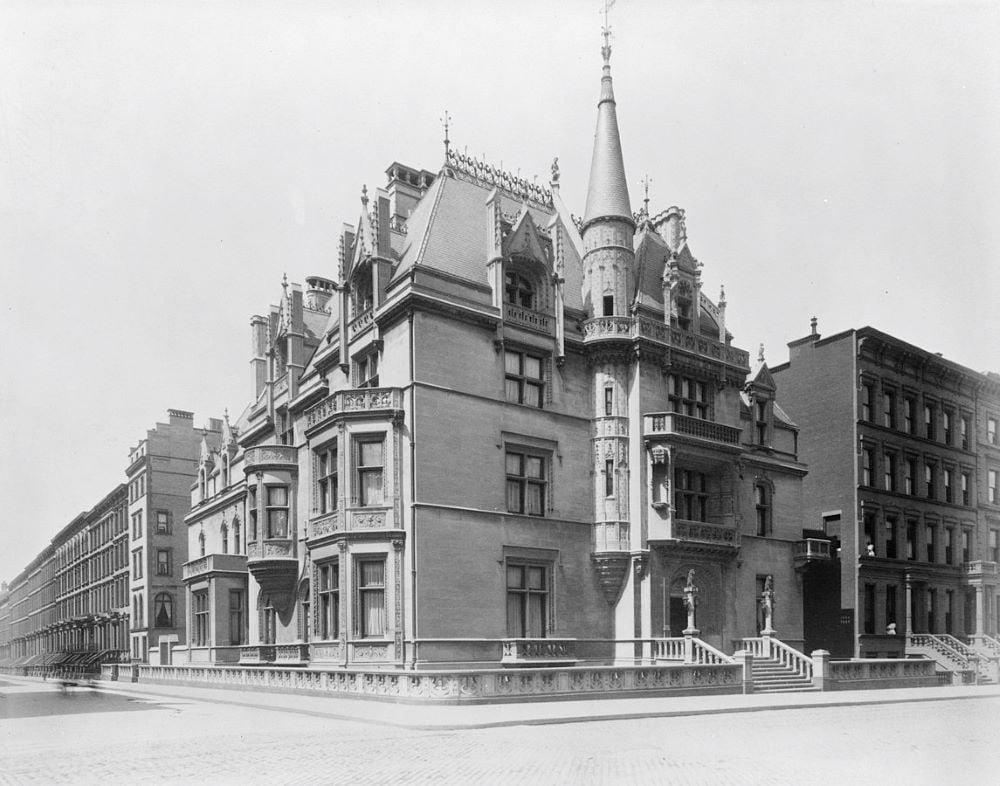
William Kissam Vanderbilt’s Petit Chateau on Fifth Avenue was an audacious departure from New York’s brownstone rows. Built in 1882 and designed by Richard Morris Hunt, it was the first French Renaissance-style mansion in New York City, and, in true Vanderbilt fashion, it demanded attention. The exterior, inspired by the grand chateaux of the Loire Valley, combined elaborate limestone carvings, arched windows, and turrets that turned heads along Fifth Avenue. Inside, Hunt crafted a world of marble staircases, stained glass, and gilded plasterwork, each room designed to outshine the last. Dubbed the “Petit Chateau” for its resemblance to a compact European palace, it was hardly modest by any standard. Its grand salons and ballrooms hosted New York’s social elite and set the tone for Gilded Age architecture on the avenue. Though demolished in 1926 to make way for commercial development, the Petit Chateau’s legacy endures as a testament to Vanderbilt’s influence in bringing European-style grandeur to Manhattan. In modern terms, this residence would easily top $50 million, a reminder of the era when a mansion was as much a personal statement as it was a home.
8. Elm Court (Lenox, MA)- Modern Value: $65 million
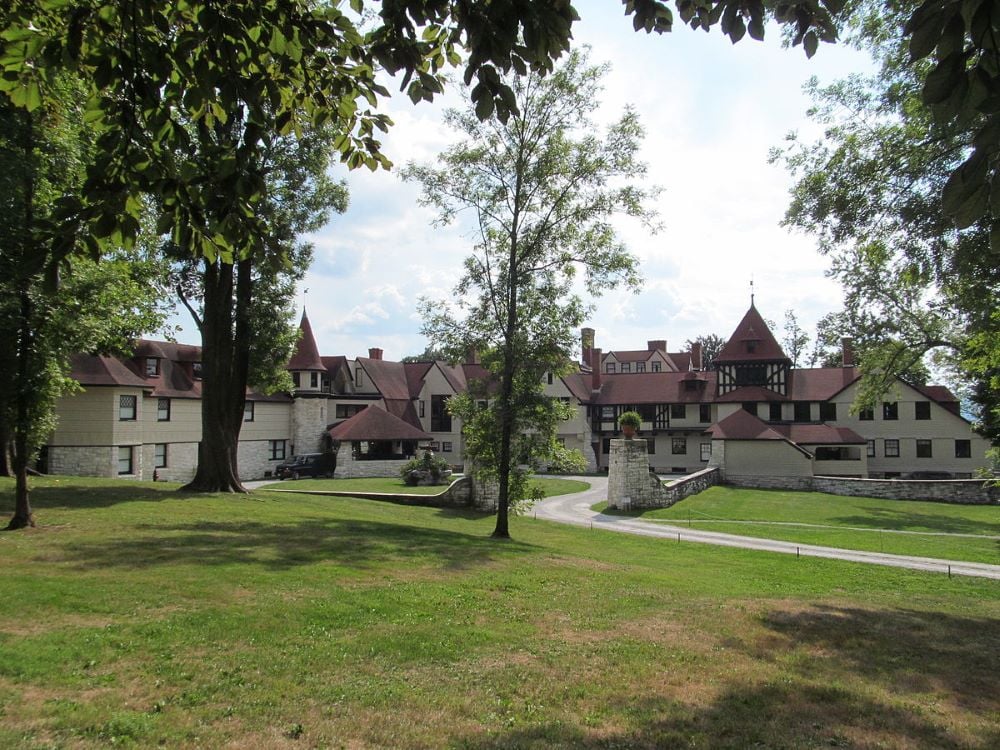
Elm Court in Lenox, Massachusetts, is the Vanderbilt estate that wears its wealth with an unexpectedly rustic elegance. Built in 1886 for Emily Vanderbilt and her husband, William Douglas Sloane, Elm Court sprawls across 55 rooms, fusing Shingle Style with Tudor Revival in a design that feels both grand and intimate. Its setting in the Berkshires adds to the charm, with rolling hills and woodlands that seem to frame the estate as a country sanctuary rather than a palace. Stanford White lent his architectural hand to the structure, while Frederick Law Olmsted, the genius behind Central Park, crafted the surrounding grounds. Elm Court’s wood-paneled rooms, vaulted ceilings, and stone fireplaces cultivate an ambiance of refined comfort. The estate became a center for the “Berkshire Cottage” crowd — those wealthy enough to call a mansion a cottage. Elm Court’s muted splendor, complete with expansive views and carefully curated gardens, captures a Vanderbilt vision of wealth without fuss, making it both a Gilded Age relic and a retreat for those who appreciate elegance over extravagance.
7. Hyde Park (New York, NY)- Modern Value: $80 million

Hyde Park, the Beaux-Arts masterpiece along the Hudson River, was Frederick W. Vanderbilt’s retreat from New York’s bustle. Built in 1898 and designed by McKim, Mead & White, this mansion embraced European classicism with an American edge. The facade is a study in restraint — limestone walls, Corinthian columns, and a portico that implies elegance without demanding it. A house like this knows it’s grand and doesn’t bother with excess frills. The interiors, however, tell a richer story. Marble floors, ornate woodwork, and crystal chandeliers bring opulence indoors, while velvet-covered walls and frescoed ceilings nod to European nobility. The grand staircase sweeps upward, flanked by wrought iron railings that echo the best of Parisian design. Rooms flow seamlessly, with windows framing the Hudson River views, each one a carefully painted canvas in itself. Artworks and tapestries line the hallways, showcasing Vanderbilt’s eye for cultural refinement. Hyde Park was meant for social gatherings but retained a sense of privacy, an estate that balanced display with discretion.
6. Rough Point (Newport, RI)- Modern Value: $85 million
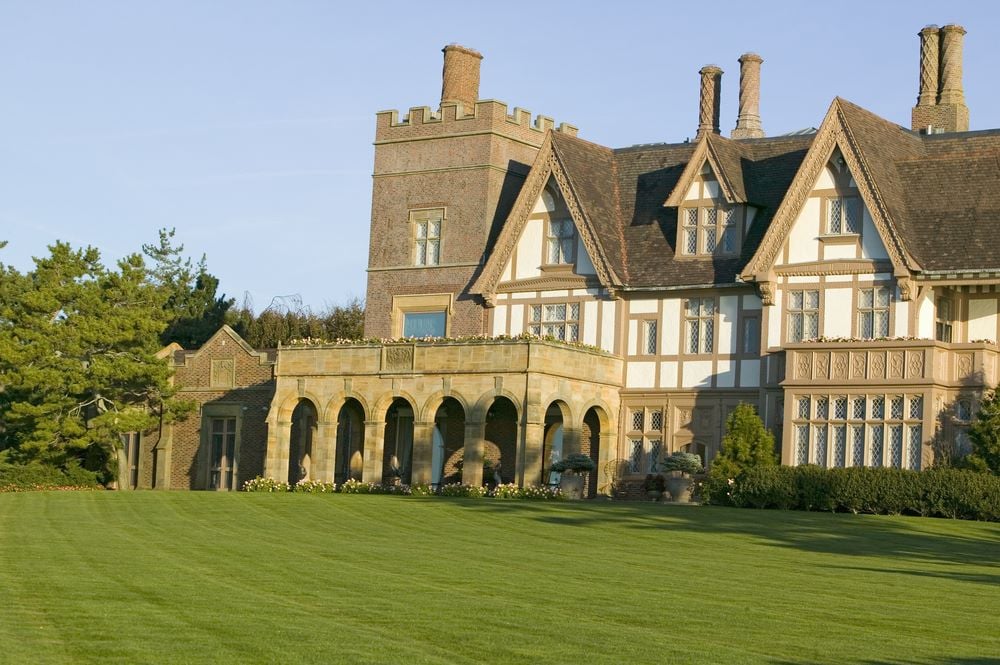
Rough Point is Newport’s gothic take on Gilded Age splendor, an oceanfront estate that seems poised to stare down the Atlantic itself. Built in 1887 and designed by Peabody and Stearns, this mansion was acquired by Frederick William Vanderbilt before passing to his niece, Doris Duke, who turned it into both a home and a museum of her eccentric taste. Its Richardsonian Romanesque architecture — heavy stone walls, arched windows, and turrets—gives it the look of an English manor with a rebellious streak, more castle than cottage. The interiors blend old-world charm with unapologetic opulence. Marble fireplaces, wood-paneled walls, and tapestries adorn the main rooms, with chandeliers that seem to drip luxury. Duke’s eclectic art collection adds flair, from Renaissance paintings to Southeast Asian sculptures. Rooms flow into each other with a labyrinthine quality, taking visitors through salons, libraries, and a conservatory that feels like stepping into a garden dream. Rough Point’s sprawling grounds continue the show, with sweeping lawns leading down to the cliffs, where waves crash with as much drama as the house itself.
5. Idle Hour (Oakdale, Long Island, NY) – Modern Value: $120 million
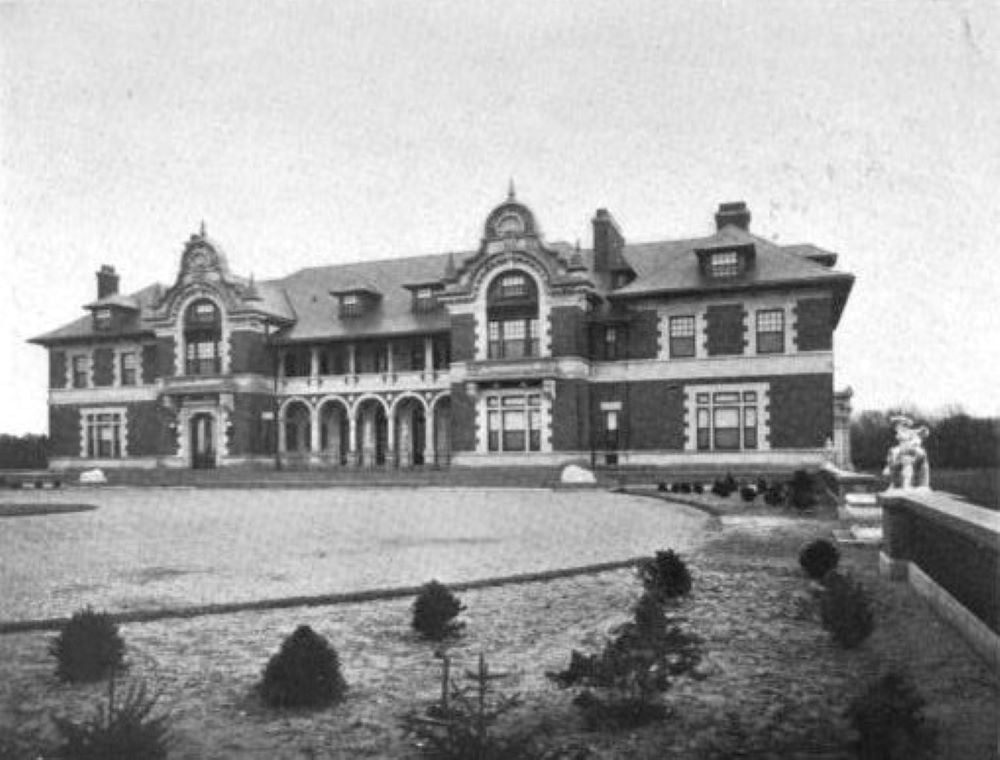
Idle Hour, William K. Vanderbilt’s summer estate on Long Island, was the ultimate playhouse for America’s turn-of-the-century elite. Completed in 1878 and designed by Richard Morris Hunt, it was a sprawling Tudor-Gothic fantasy set on over 900 acres in Oakdale. A world apart from city life, Idle Hour fused English manor aesthetics with Vanderbilt’s characteristic Gilded Age grandeur, creating a haven where luxury and leisure coexisted. Its exterior flaunted gables, tall chimneys, and ivy-covered walls, blending into landscaped gardens that felt like a curated slice of the English countryside. The interiors, however, dropped any pretense of subtlety. Vanderbilt filled Idle Hour with sweeping oak staircases, mahogany-paneled dining rooms, and expansive salons that seemed to wait patiently for grand banquets and soirées. Each room held something rare, whether it was imported marble, Flemish tapestries, or intricately carved fireplaces. Idle Hour’s grounds were equally indulgent — a private racetrack, stables, and Italianate gardens where guests could ride, stroll, or lounge in style. Unfortunately, the mansion was lost to fire in 1899, but Vanderbilt rebuilt it, larger and more lavish than ever, cementing Idle Hour as a symbol of his endless drive to live grandly, summer after summer.
4. Shelburne Farms (Vermont) – Modern Value: $130 million
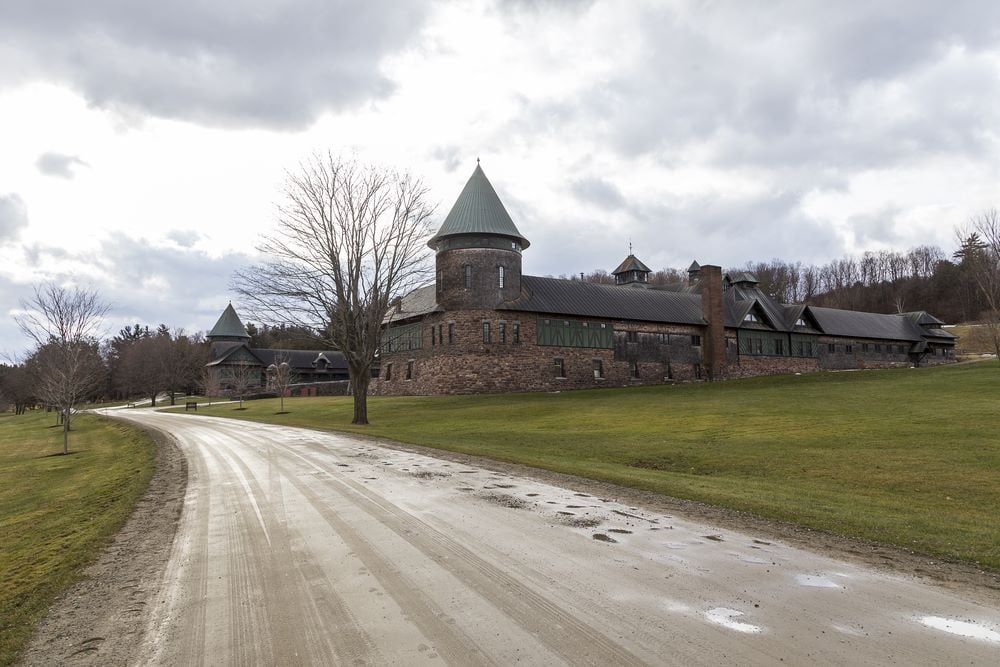
Shelburne Farms in Vermont, built by Dr. William Seward Webb and Eliza Vanderbilt Webb in 1886, reflecys the Vanderbilt penchant for turning rustic retreats into monuments of grandeur. This 1,400-acre estate is less of a farm and more of an agricultural theater, with Frederick Law Olmsted himself sketching out sweeping landscapes that fuse practical farming with picturesque beauty. The estate’s main house, designed by Robert H. Robertson, is a Tudor Revival masterpiece that overlooks Lake Champlain, blending into a scene that feels equal parts British pastoral and Gilded Age indulgence. Inside, Shelburne Farms spares no detail. Timbered ceilings, grand fireplaces, and leaded windows frame rooms built for both family comfort and aristocratic gatherings. Here, the Webbs held court over agricultural demonstrations and social events, setting a standard for the “gentleman’s farm” that would become the ideal for elite estates. The barns, more like castles for cows, mix brick and timber with the same care as any Vanderbilt mansion, each barn designed to elevate farming to high art. Shelburne Farms, now a nonprofit and educational center, lives on as an icon of a time when luxury could be rural and farming could be fashionable, displaying a balance of opulence and pragmatism that only a Vanderbilt could achieve.
3. Biltmore Estate (Asheville, NC)- Modern Value: $180 million
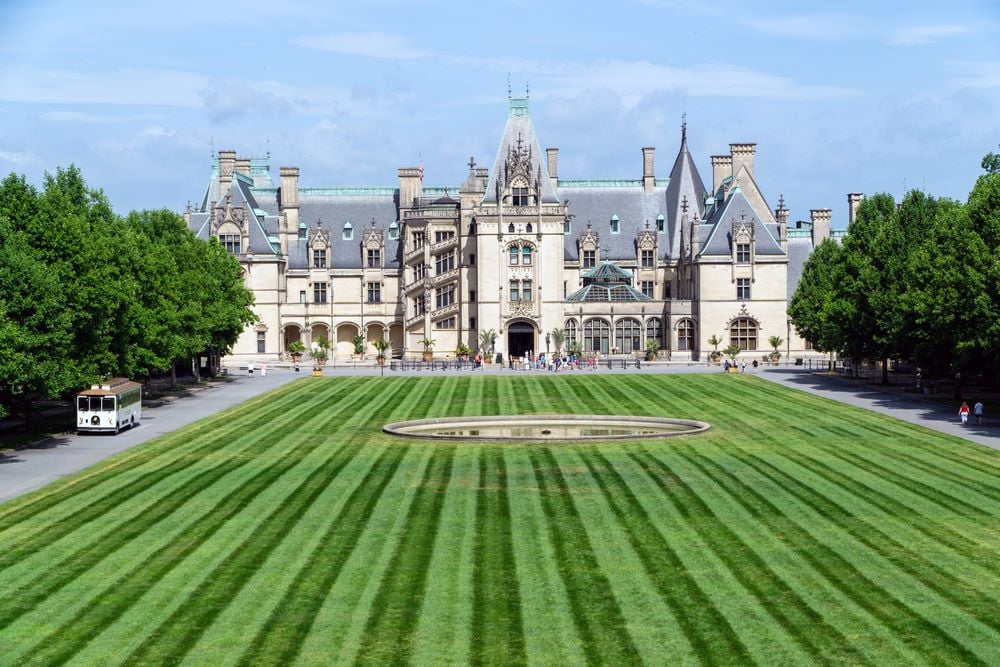
Biltmore Estate, George Washington Vanderbilt’s 250-room homage to French Renaissance châteaux, dominates Asheville, North Carolina’s rolling hills with the easy grace of a European manor that took a detour through American ambition. Designed by Richard Morris Hunt and completed in 1895, Biltmore is an architectural spectacle. With a limestone facade stretching 375 feet, it flaunts turrets, dormer windows, and a massive library that hints at Vanderbilt’s literary obsessions. The interiors could make Versailles blush — vaulted ceilings, tapestries, marble fireplaces, and rooms filled with priceless art. Vanderbilt, who traveled extensively, filled each corner with treasures from around the world: Flemish tapestries, Spanish chests, and a stunning collection of art by John Singer Sargent. The mansion boasts America’s first private indoor pool, a banquet hall fit for royal feasts, and a winter garden encased in glass. Frederick Law Olmsted, the landscape wizard behind Central Park, designed Biltmore’s grounds, setting formal gardens against a backdrop of untouched forests and winding paths.
2. The Breakers (Newport, RI) – Modern Value: $220 million
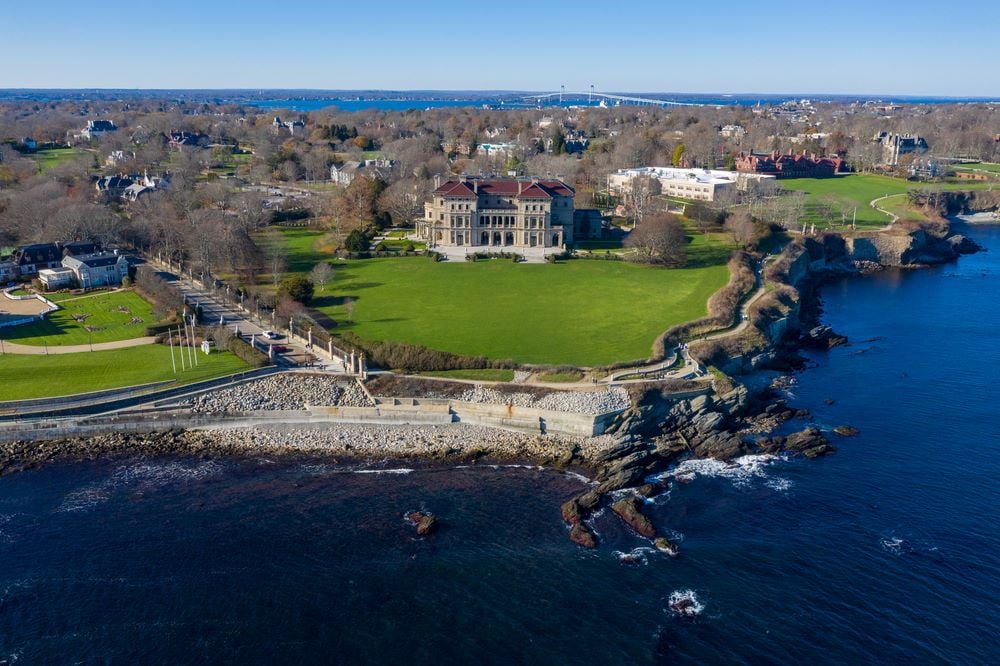
The Breakers, Cornelius Vanderbilt II’s summer “cottage” in Newport, is an Italian Renaissance palace perched boldly on a cliff, looking out over the Atlantic as if it were the Mediterranean. Designed by Richard Morris Hunt and completed in 1895, it was no ordinary escape from Manhattan — it was a 70-room, five-story estate that turned Gilded Age opulence into architecture. The limestone facade, lined with Corinthian columns and intricate reliefs, leads into a marble-clad interior that practically glows with wealth. Step through the doors, and you’re met with a grand staircase under a ceiling painted to resemble the Italian palaces Cornelius admired on his travels. The Great Hall stretches two stories, wrapped in gilded woodwork, its chandeliers catching the afternoon light just right. Rooms flow with themes: Louis XVI style here, a touch of French Baroque there, each corner flaunting treasures — from tapestries to rare marbles — that Cornelius collected as proof of his cultural credentials. The estate’s gardens were designed to complement the mansion’s audacity, with manicured lawns that roll toward the sea.
1. Marble House (Newport, RI)- Modern Value: $350 million
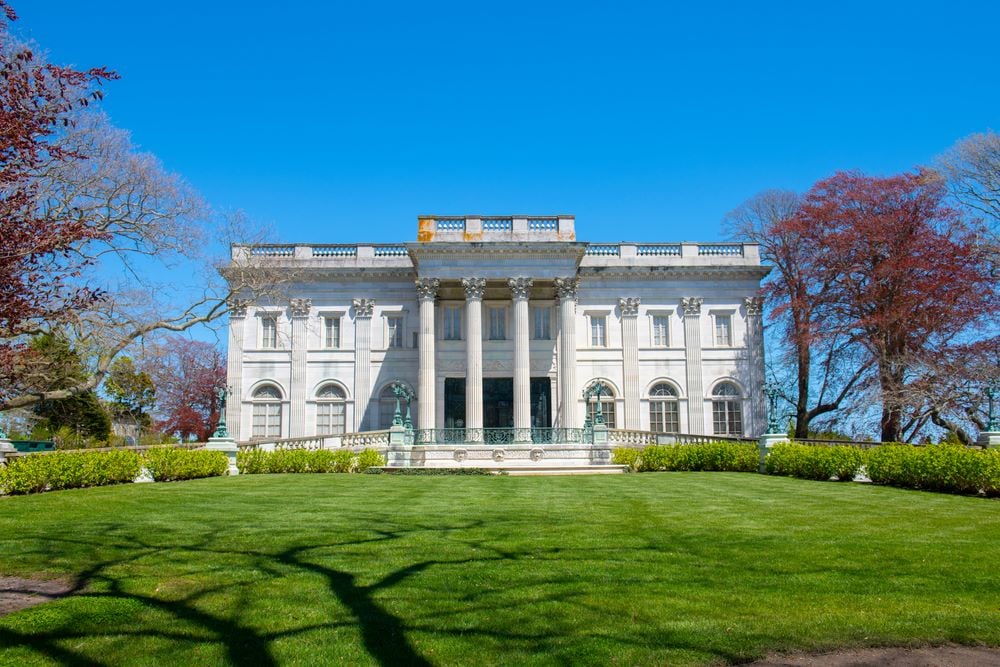
Marble House in Newport, Rhode Island, is Alva Vanderbilt’s unrestrained vision of Gilded Age glamour. Built in 1892 as a birthday gift from her husband, William K. Vanderbilt, this palace was designed by Richard Morris Hunt and modeled after the Petit Trianon at Versailles — a choice that leaves no room for subtlety. Marble House flaunts 500,000 cubic feet of marble, brought in from across the globe, from rose-colored marble in the grand staircase to stunning veined marbles in each lavishly appointed room. The “Gold Room” sets the tone, with walls coated in 22-karat gold leaf, gilding that practically drips from the ceiling, and mirrors that reflect a different kind of American aristocracy, one built not on titles but on money —oodles of it. Alva used the estate to host salons and secure her status as Newport’s social queen. She even had a Chinese Tea House added to the property, an elaborate nod to the allure of exoticism, giving Marble House a whimsical touch that contrasted with its fortress-like stone facade. As a symbol of ambition wrapped in opulence, Marble House stands tall, less a home and more an imperial statement. Alva’s creation remains one of America’s grandest declarations of wealth, transformed into architecture. Next up… 10 British royal residences by modern value.
10. British Royal Residences by Modern Value – Birkhall Estate (Aberdeenshire, Scotland)- Modern Value: £10 million GBP / $13 million USD
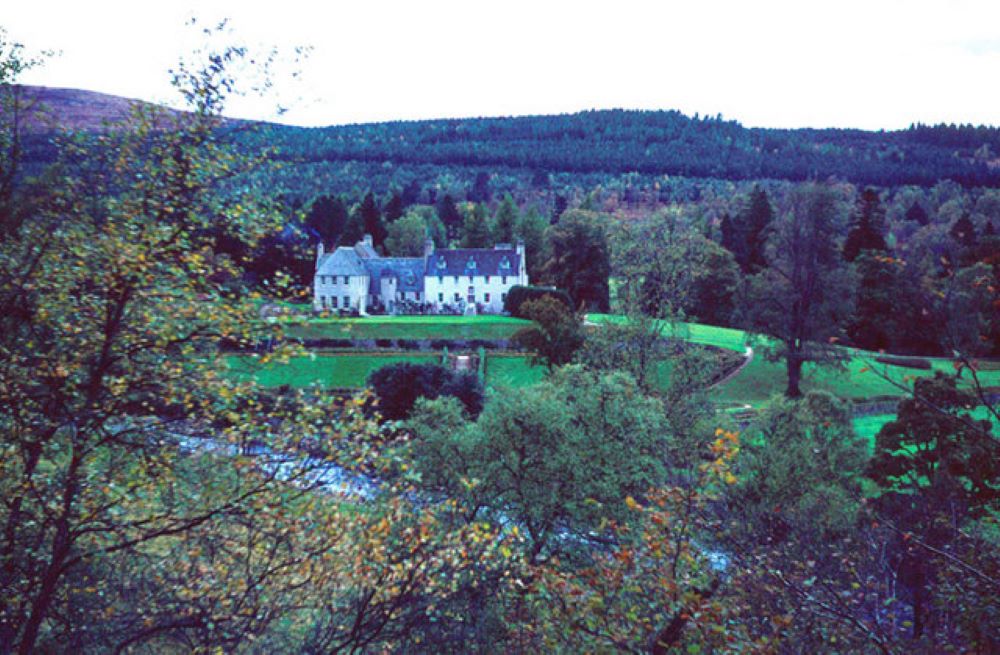
Birkhall, a Scottish gem tucked along the River Muick on the Balmoral estate, serves as Prince Charles’s private refuge. Built in 1715, Birkhall carries an air of genteel resilience, having passed through royal hands since Queen Victoria’s era. Its design speaks the language of Georgian architecture — simple symmetry, whitewashed walls, and ivy-draped stone that blends with the surrounding hills. With charm that feels closer to home than palace, Birkhall offers a warmth absent in Britain’s grander residences. Inside, Birkhall’s interiors are a study in traditional, understated elegance: tartan carpets, overstuffed armchairs, and walls lined with portraits that whisper stories of past inhabitants. The rooms are intimate rather than imposing, punctuated by large windows that frame the Aberdeenshire countryside as if nature itself were a mural. For Charles, the house is more than a retreat; it’s where he gardens, paints, and escapes the perpetual pageantry of public life. Birkhall’s value is modest compared to its Windsor counterparts, but it’s priceless for its spirit.
9. Sandringham House (Norfolk)- Modern Value: £75 million GBP / $97.6 million USD
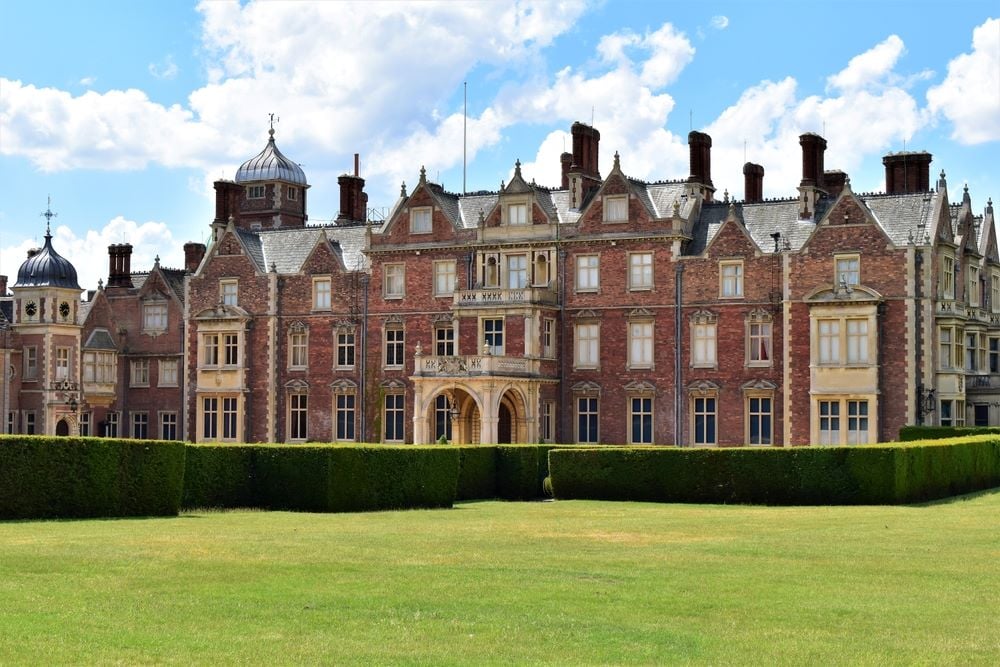
Sandringham House, nestled in Norfolk, is the British royal family’s favorite country retreat — a Victorian confection built for relaxation rather than ceremony. Originally purchased by Queen Victoria for her son, the future Edward VII, in 1862, it reflects a rare, almost informal slice of royal life. The house itself is a sprawling, red-bricked affair with a mix of Jacobethan and Renaissance Revival styles. It exudes a charm that’s both approachable and grand, with expansive grounds that stretch across 20,000 acres, serving as a backdrop for royal shooting parties and Christmas gatherings. Inside, Sandringham combines comfort with stateliness. The wood-paneled dining rooms, filled with family portraits, feel lived-in, while the library, with its leather-bound volumes and cozy armchairs, is fit for a king — or a prince who prefers a good read to a state function. Sandringham’s rooms are intimate, dressed in warm tones and traditional English furnishings, the kind that invite afternoons of quiet conversation and tea. While Sandringham’s value is estimated at around £75 million, its worth to the royals is unquantifiable. It’s where four generations of Windsors have gathered for Christmas, a country sanctuary that values family tradition as much as architectural beauty.
8. Holyrood Palace (Edinburgh)- Modern Value: £75 million GBP / $97.6 million USD
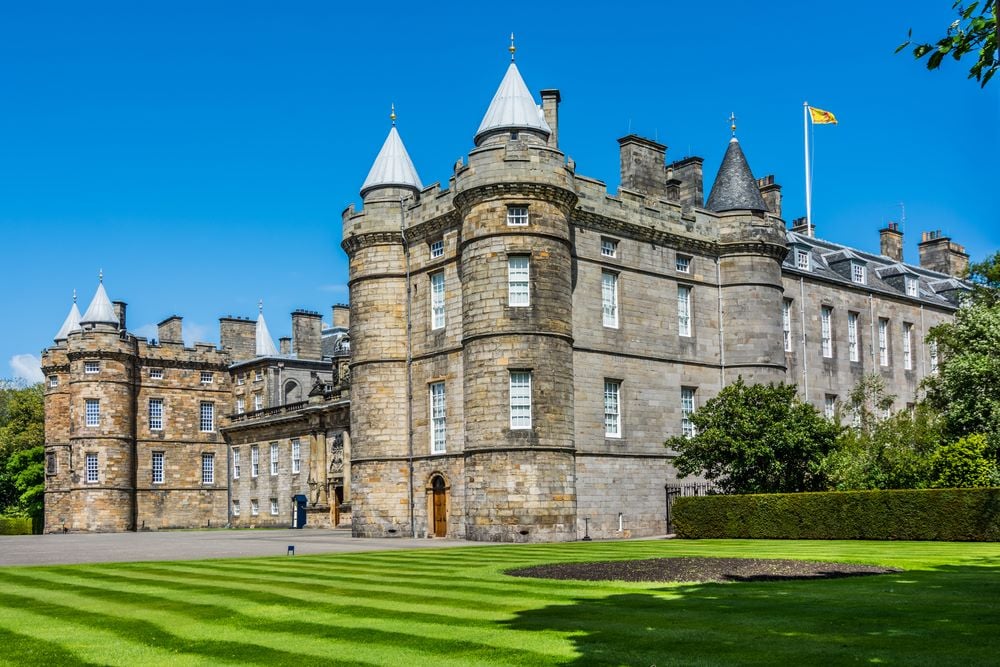
Holyrood Palace sits at the foot of Edinburgh’s Royal Mile, a stately shadow in the Scottish skyline with roots as tangled as a Highland thistle. Built in the early 16th century by James IV, it began as an abbey guesthouse before morphing into the favored residence of Scottish royalty. Holyrood carries a weighty history — rooms draped in tapestries and whispers of Mary, Queen of Scots, whose life unfolded in dramatic episodes within these very walls. Its architectural style is an eclectic mix of Renaissance and Gothic, with towers that rise like stone sentries against the Scottish mist. Visitors pass through a Great Hall, once used by kings to host banquets fit for lords and diplomats, while narrow, spiral staircases lead up to the storied bedchamber of Mary, Queen of Scots. Holyrood’s chapel remains one of its most haunted corners, filled with crumbling stone and memories of royal scandals. Today, Holyrood is the King’s official Scottish residence, a working palace where ancient rooms have seen centuries of intrigue and ceremony.
7. Clarence House (London)- Modern Value: £76 million GBP / $98.9 million USD
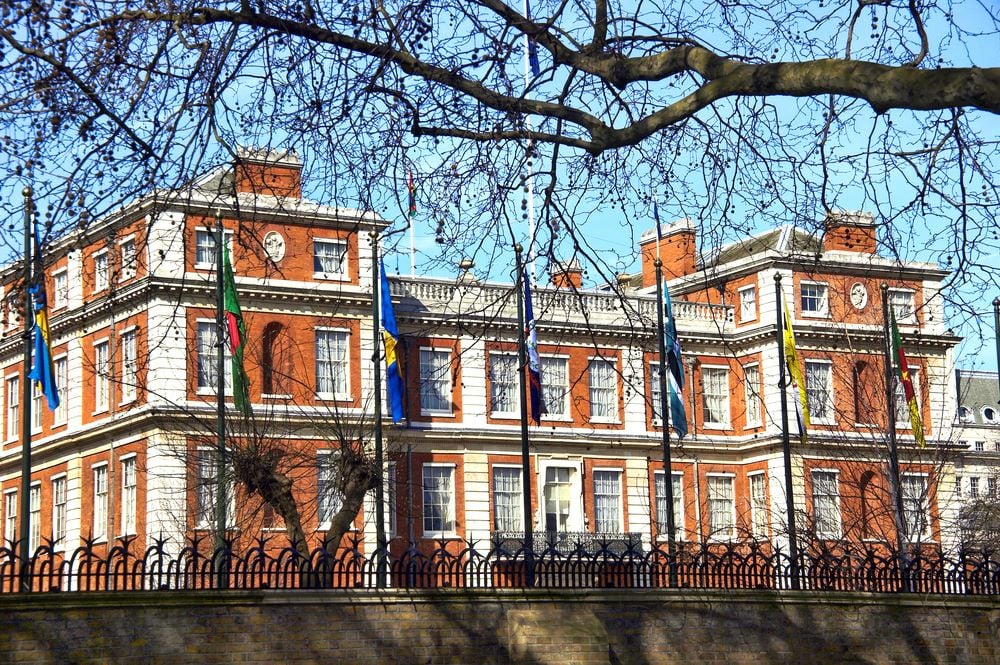
Clarence House stands a short walk from Buckingham Palace, quietly tucked between tradition and modernity. Built in 1827 by John Nash for the Duke of Clarence, later William IV, this Georgian mansion wears elegance with an air of understatement. It’s a house of dignified charm — an old-world oasis in London’s bustling heart. Each room is dressed in soft hues, with high ceilings that seem to stretch ambitions as well as walls. The decor is a mix of personal touches and priceless artifacts, blending royal history with a nod to comfort. Architecturally, Clarence House respects Georgian style while adapting over the years. Its plasterwork, grand fireplaces, and classic proportions have been preserved, yet each successive royal tenant left a touch of their own. The Queen Mother called it home for nearly five decades, filling it with art, flowers, and her celebrated gin supply. Today, it serves as the residence of the Prince of Wales, where family photos sit beside fine porcelain, and rooms exude warmth rather than grandeur. While it might not shout with the same pomp as Buckingham, Clarence House remains a bridge between the ceremonial and the personal, an intimate corner of royal life shaped by each generation that has passed through.
6. Balmoral Castle (Scotland) – Modern Value: £140 million GBP / $182.2 million USD
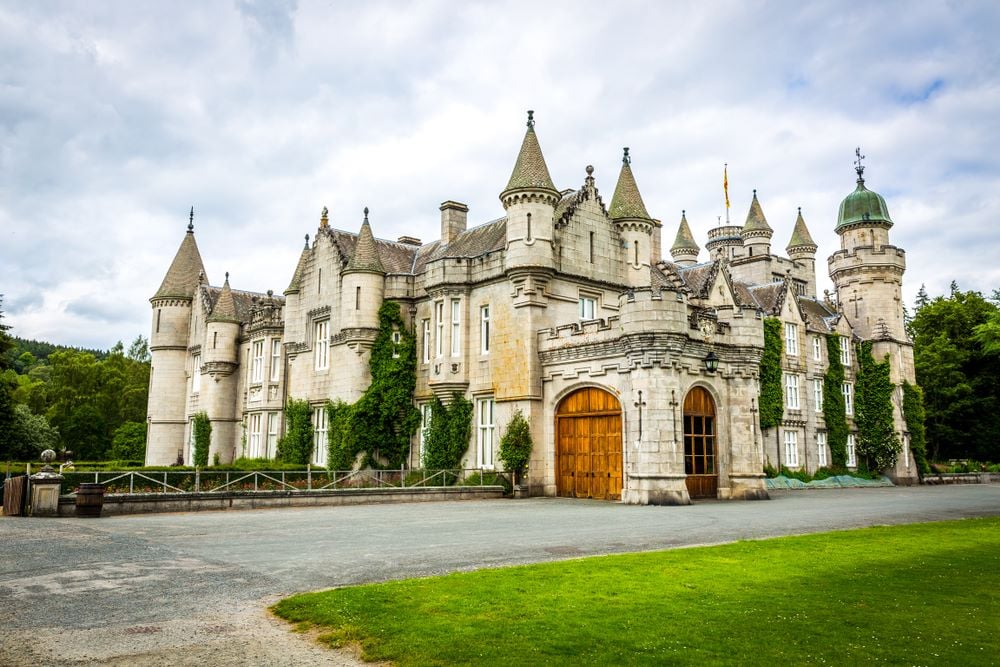
Balmoral Castle rises from the rugged Scottish Highlands like something out of a romantic novel, wrapped in granite and mist. Originally purchased by Prince Albert for Queen Victoria in 1852, this estate has held a place in royal hearts as more than a residence; it’s a retreat from the weight of monarchy. Albert, never one to settle for second best, tore down the old house and commissioned a new castle in the Scottish baronial style, a blend of turrets, battlements, and pepper-pot towers. The interiors speak to comfort over opulence, though still peppered with nods to Victorian taste: dark wood, tartan carpets, and deer antlers lining the halls. Balmoral’s charm lies in its modest grandeur — large enough to inspire awe, intimate enough to feel like a home. Victoria adored it here, and her descendants followed suit, making it a royal playground with grouse hunting, fishing, and endless walks through the estate’s 50,000 acres.
5. Hampton Court Palace (Richmond upon Thames, London) – Modern Value: £200 million GBP / $260.3 million USD

Hampton Court Palace is England’s most theatrical Tudor marvel, a palace with rooms that seem to breathe intrigue and corridors that echo with royal excess. Built by Cardinal Wolsey in 1515 and later seized by Henry VIII, it’s as if each brick was laid with a wink, promising tales of power and pleasure. The architecture reflects an era that thrived on grandeur: red-bricked facades, towering chimneys, and those unmistakable crenellations lending a fortress-like edge to a residence. Inside, the Great Hall dazzles, its hammerbeam ceiling and Flemish tapestries still exuding the opulence of Henry’s reign. The walls have seen everything from lavish feasts to whispered conspiracies, with each room telling a different tale. The Chapel Royal, with its vivid blue ceiling and gilded tracery, is a masterpiece of Tudor piety and showmanship. Outside, the gardens stretch endlessly, featuring one of the oldest hedge mazes in the world — a labyrinth designed to disorient and entertain. After the Tudors, Sir Christopher Wren added Baroque elements for William and Mary, blending styles with the palace’s Tudor core. Hampton Court holds centuries within its walls, an enigmatic place where history feels alive, as if the players have only just left the stage.
4. Windsor Castle (Windsor, Berkshire)- Modern Value: £500 million GBP / $650.7 million USD
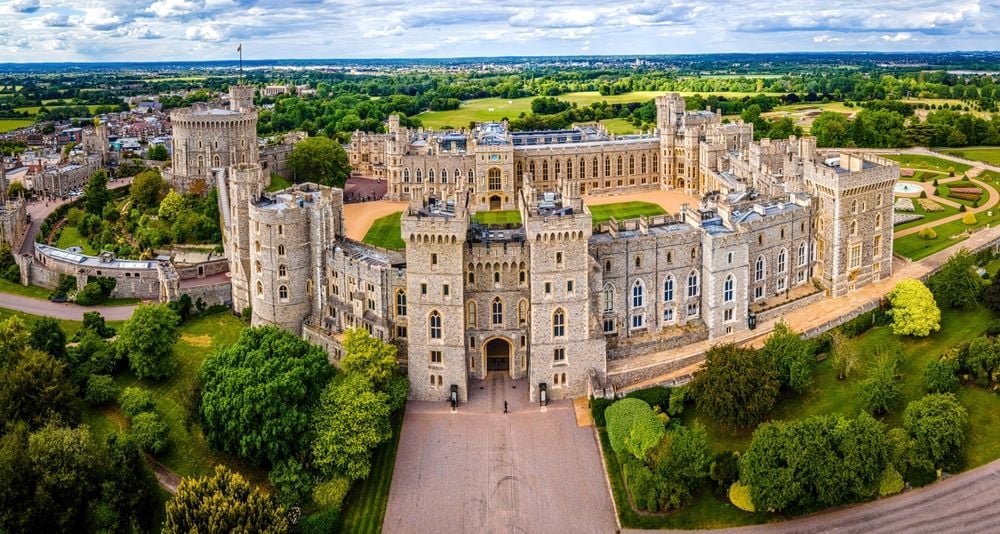
Windsor Castle towers over the English countryside like a medieval colossus, a fortress turned royal sanctuary that has seen nearly a millennium of English history. Founded by William the Conqueror in the 11th century, Windsor began as a wooden motte-and-bailey fort but has evolved into a grandiose stone stronghold, blending Norman, Gothic, and Georgian styles. It’s a place where battle scars meet gilded ceilings, where arrow slits coexist with silk-draped tapestries. The State Apartments are the crown jewel, filled with Rembrandts, Rubenses, and rooms bursting with velvet and gold leaf. St. George’s Chapel, a marvel of Gothic architecture, houses the remains of kings and queens and stands as the spiritual core of the Order of the Garter, Britain’s oldest and most exclusive order of chivalry. The Round Tower, looming over the grounds, is perhaps the most iconic feature, surveying the Thames Valley with a kind of regal defiance.
3. St. James’s Palace (London)- Modern Value: £600 million GBP / $780.9 million USD
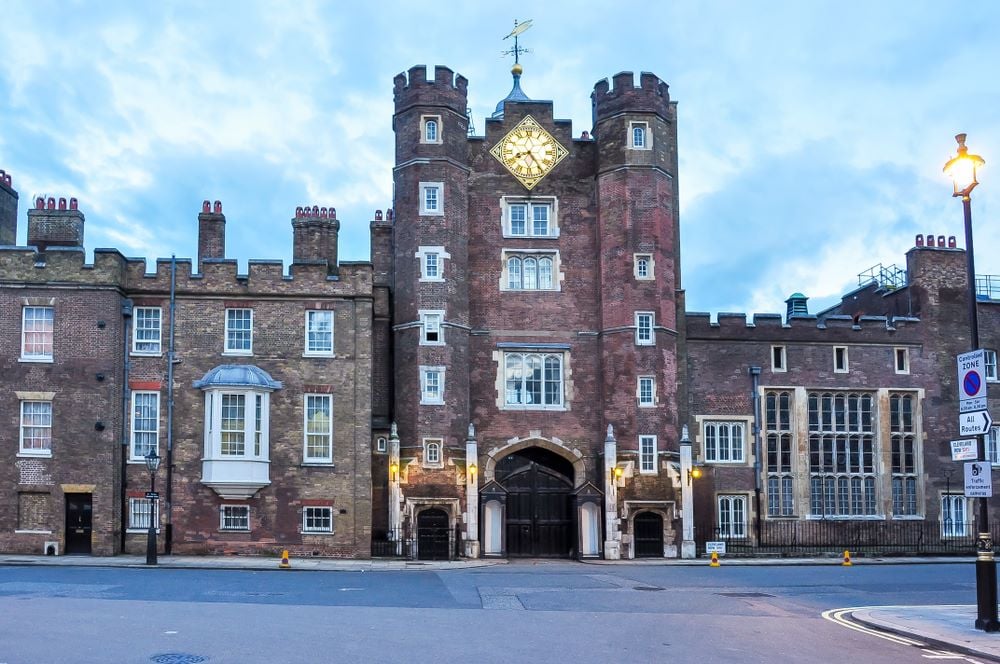
St. James’s Palace is London’s Tudor survivor, a palace built by Henry VIII in 1531 as a monument to his own reign and every bit as grand as you’d expect. Made of distinctive red brick and embellished with battlements, it stands as one of the oldest royal residences in London, a fortress of intrigue and ceremony on the edge of St. James’s Park. Its architectural style is unapologetically Tudor, with towering chimneys, crenellated parapets, and arched doorways that seem to usher you back to the age of Henry’s court. The interiors, while less ostentatious than Buckingham’s, are filled with the gravitas of centuries. The Chapel Royal has seen everything from royal weddings to the christening of future kings, a Gothic marvel adorned with stained glass and gilded woodwork. St. James’s also houses the offices of royal figures and is the official London residence for ambassadors — its spaces aren’t ceremonial relics; they’re working quarters for Britain’s royal machinery.
2. Kensington Palace (London) – Modern Value: £620 million GBP / $806.9 million USD
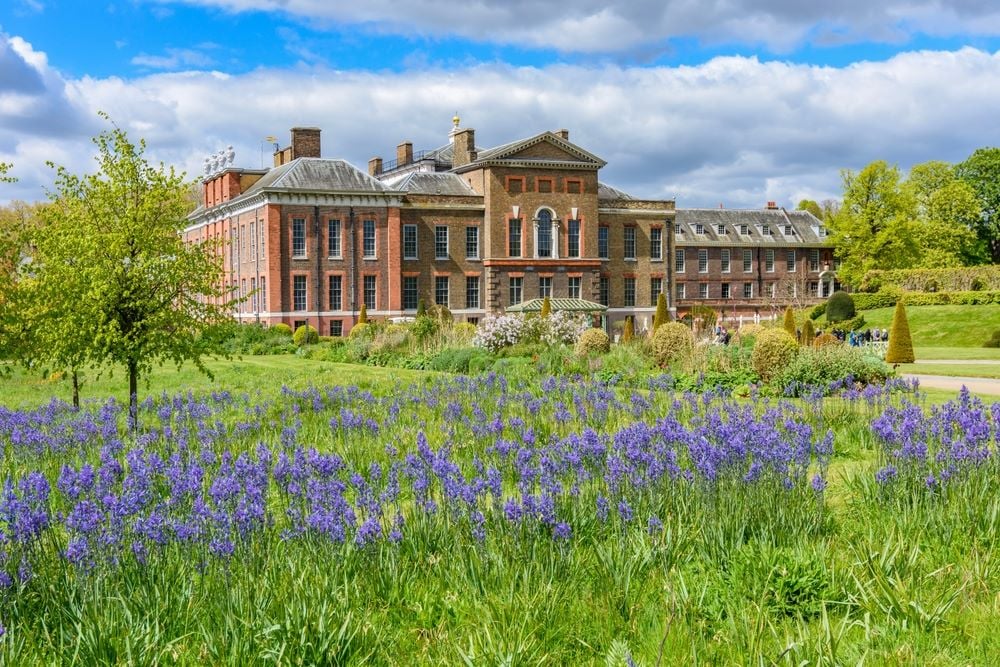
Kensington Palace is London’s elegant paradox: stately yet cozy, historic yet unmistakably lived-in. Originally built in 1605 as a modest Jacobean mansion, it was bought and expanded by William III and Mary II, who sought a retreat from the smog of Whitehall. Sir Christopher Wren was brought in to elevate it to royal standards, and his symmetrical red-brick design stands today as a testament to restrained opulence. The King’s and Queen’s State Apartments are layered with Baroque flourishes, from elaborate cornices to gilded chandeliers that look straight out of a Rembrandt painting. The gardens, designed by George London and Henry Wise, are equally impressive — a maze of hedges, fountains, and floral displays that beckon you toward the Orangery, a gem in itself. Kensington’s allure lies not in ostentation but in its understated charm. Queen Victoria was born here; Princess Diana made it a focal point of modern royalty; now, the Duke and Duchess of Cambridge call it home. Rooms overflow with history yet remain intimate, reflecting the palace’s knack for balancing tradition with warmth.
1. Buckingham Palace (London) – Modern Value: £4.9 billion GBP / $6.4 billion USD
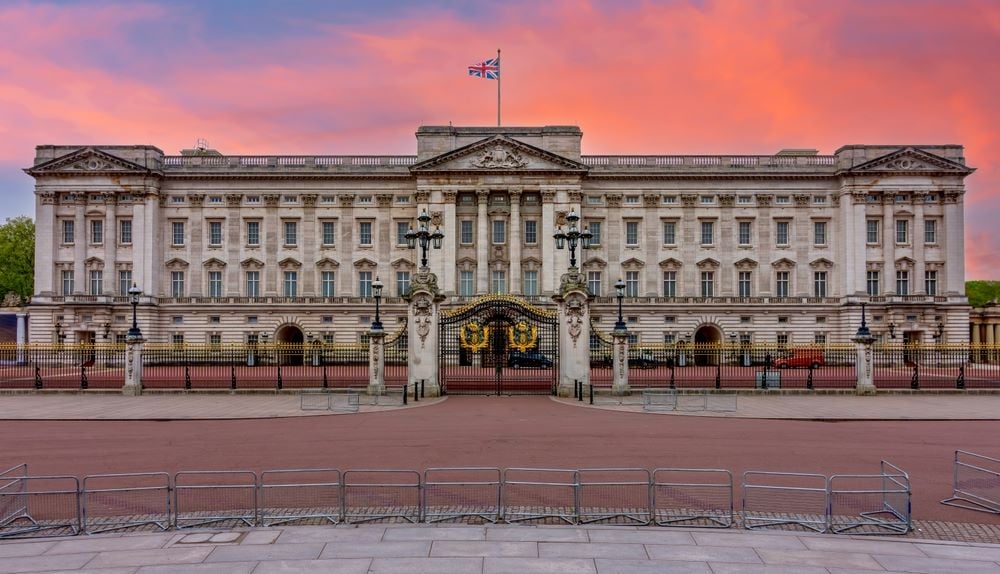
Buckingham Palace is the royal megastructure that almost defies description. Originally a modest townhouse built in 1703 for the Duke of Buckingham, it was snapped up by King George III in 1761 and transformed, brick by brick, into the British monarchy’s epicenter. The architectural style is a curious blend of neoclassical grandeur with the formality that only London can pull off. John Nash added the iconic East Front, all columns and symmetry, a facade that now stares down the Mall like a stone-faced monarch. Step inside, and opulence takes on new dimensions. There are 775 rooms, each more extravagant than the last, with marble pillars, gold-framed mirrors, and enough crimson velvet to carpet London. The State Rooms, opened to the public in recent years, are a masterclass in royal decor: the Throne Room, draped in red and gold, seems plucked from a dream sequence, while the White Drawing Room, with its secret door for entrances, feels almost cinematic.
British Royal Properties Set the Gold Standard
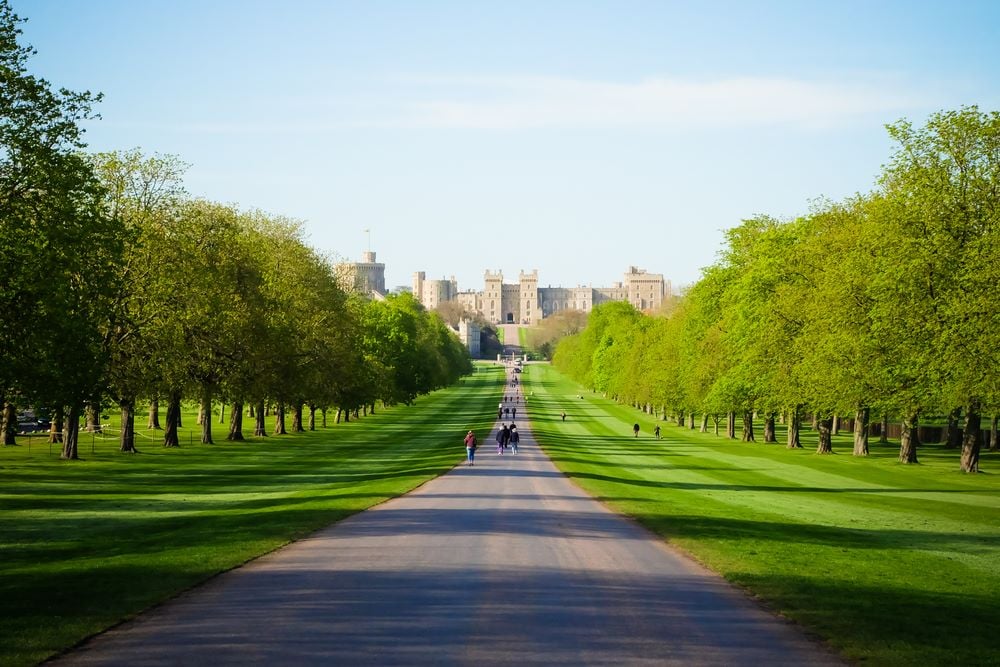
Vanderbilt estates like Marble House and The Breakers, with their gilded interiors and imported European charm, were America’s attempt to rival European royalty. At $350 million, Marble House is the most expensive Vanderbilt residence, yet it’s dwarfed by the value of the British royal palaces, particularly Buckingham Palace at a staggering £4.9 billion. The British royal residences offer a far grander scope of historical and architectural legacy, with values that soar not only due to opulence but because of centuries of accumulated heritage and state function. Where Vanderbilt estates mirror Europe’s aristocratic stylings, the British royal properties set the gold standard for enduring luxury, architectural gravitas, and historical prominence. The Vanderbilt estates, impressive though they are, capture the boldness of American wealth; the British royal palaces, on the other hand, embody the continuity and prestige of a royal legacy that has spanned centuries.

